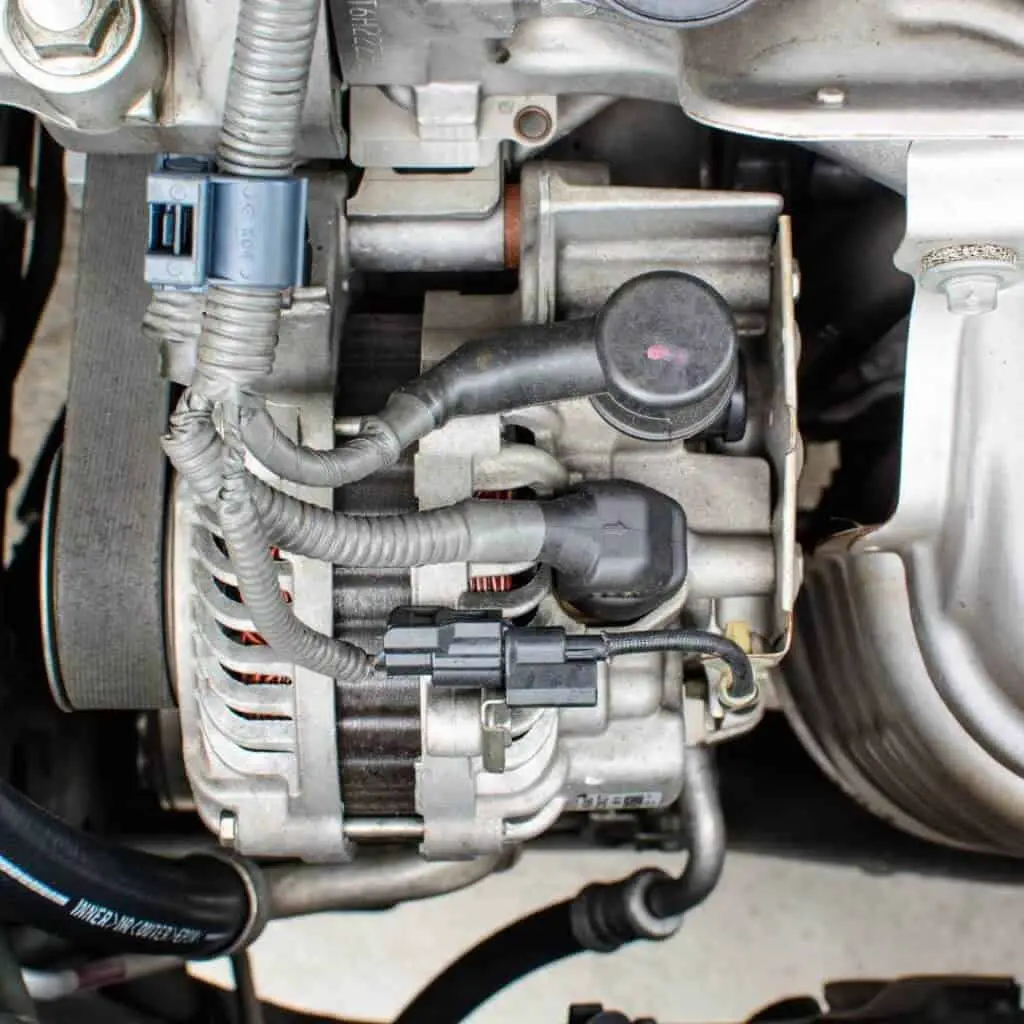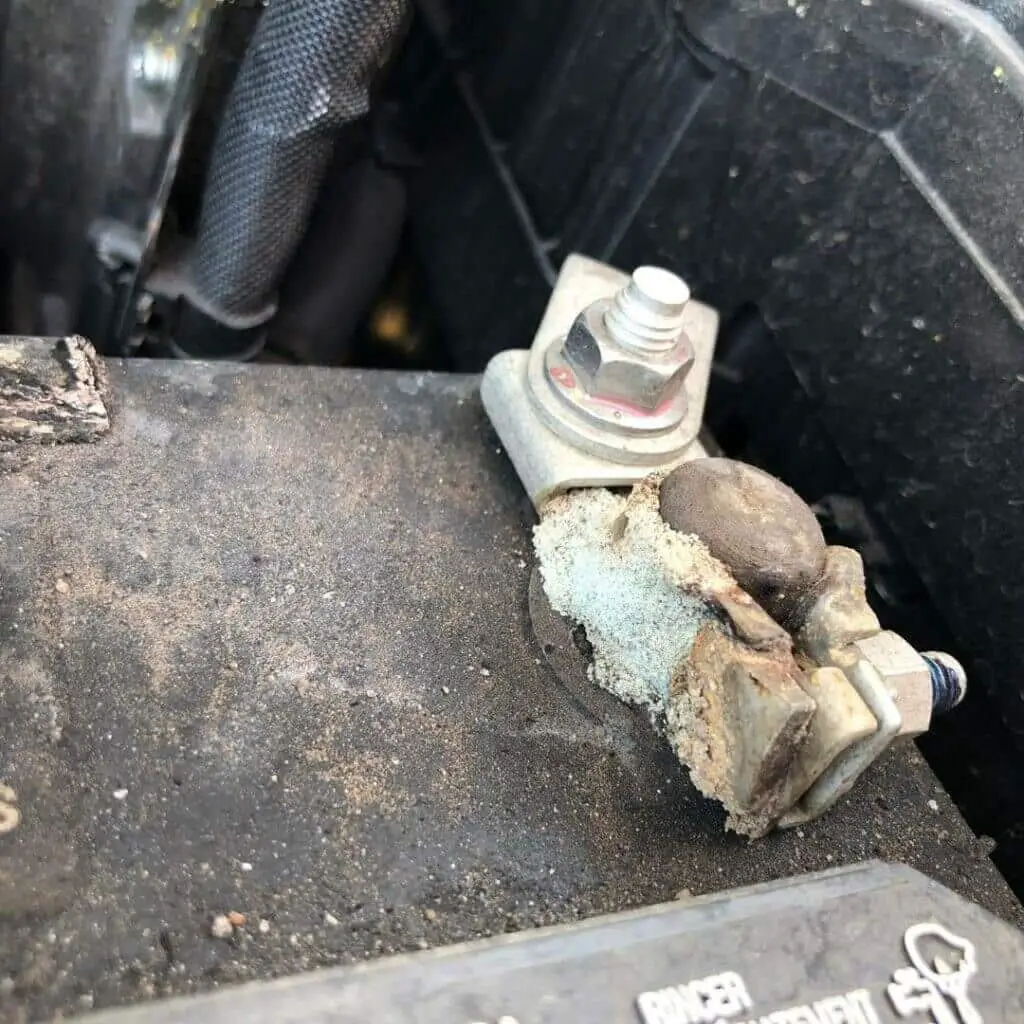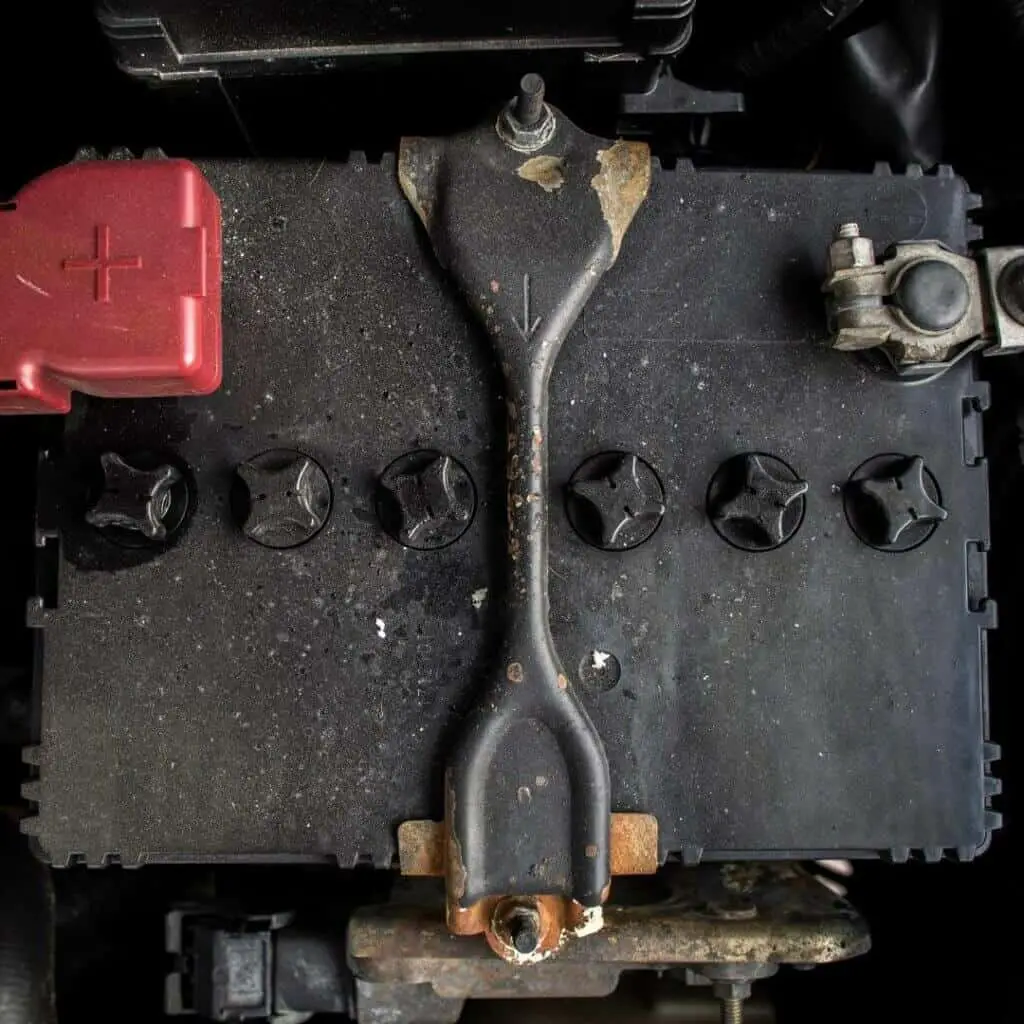The act of overfilling your engine can be as troublesome as lacking oil. Cars are made to handle a certain amount of this substance, and having too much of it can cause issues with the engine. Here, we will look into the potential side effects when we overfilled engine oil by 1 litre or 33,8oz.
Overfilled engine oil by 1 litre
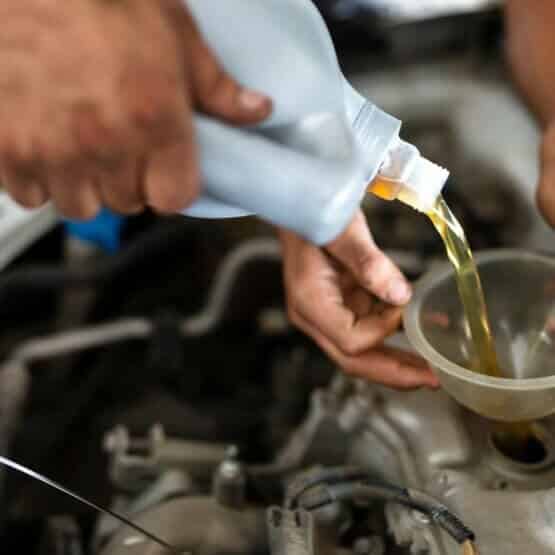
There are a few factors involved in overfilling your engine with oil. First, the number of cylinders within an engine and the engine type can affect the consequences of pouring extra oil.
For example, inserting a bit of extra oil into an engine with four or more petrol cylinders may show up with not a single issue. [1]
You will do fine pouring around 100 to 200 g (3,5-7 oz) of extra fuel per 5 litres (34oz) of oil capacity. However, pouring 1 litre of oil (33,8oz) into some engines could result in crankshaft oil seal issues or cylinder head gasket malfunctioning. This will become apparent if the oil has a foamy or bubbly texture.
The odd oil behavior is a showcase of an overfilled sump. This happens when oil is being churned and aerated by the crank. When oil has foamy or bubbly texture, our engine could suffer serious damage so make sure to change the oil if that happens.
Overfilled engine oil symptoms
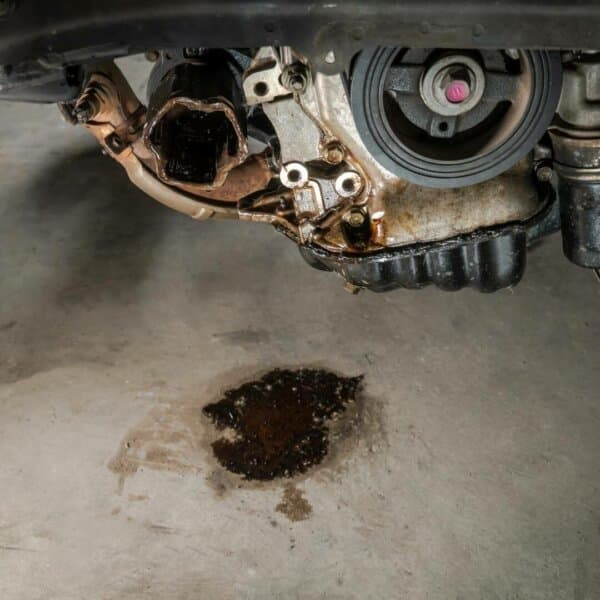
Regardless of our car’s problem, it’s always useful to learn how to recognize warning signs. By following apt symptoms and responding to them accordingly, we can avoid most problems our car can suffer from.
Car leaks oil
While there are several reasons our oil may leak. Overfilling the engine with oil may be the least problematic and most common. Put simply, and the oil has no space within the oil filler. So it will start seeping through the cap and leaking drop by drop. [2]
The smell of burning oil
A more troublesome and worrying symptom is sensing the smell of burning oil. Firstly, this is a very uncomfortable smell that we’d rather avoid. Secondly, the indication of oil-burning often draws in more dangerous suspicions.
Thankfully, it may also just be oil leaking onto a hot engine and evaporating. While not completely harmless, it’s still pretty meek regarding consequences.
Engine emits smoke
Even more apparent than previous symptoms is your engine emitting smoke. This should invoke immediate action from you. Whether it’s from our oil leaking or some other factor, smoke coming from an engine is never a good sign. Furthermore, the smoke can obscure our vision while driving, leading to more difficult navigation.
Black exhaust or smoke from the exhaust pipe
A few factors can trigger black smoke coming from our exhaust. Similarly to engine smoke, this is a symptom that can lead to further problems on the road. It usually stems from oil getting into the engine and getting through the entire fueling process until released through the exhaust. [3]
Weird noises from the engine
While a rather broad category, weird noises from your engine can be a good indicator of overfilling issues. If oil gets into the bits and parts of the engine, the internal processes of the engine may get affected, resulting in these sounds.
How long can I run my car with too much oil?
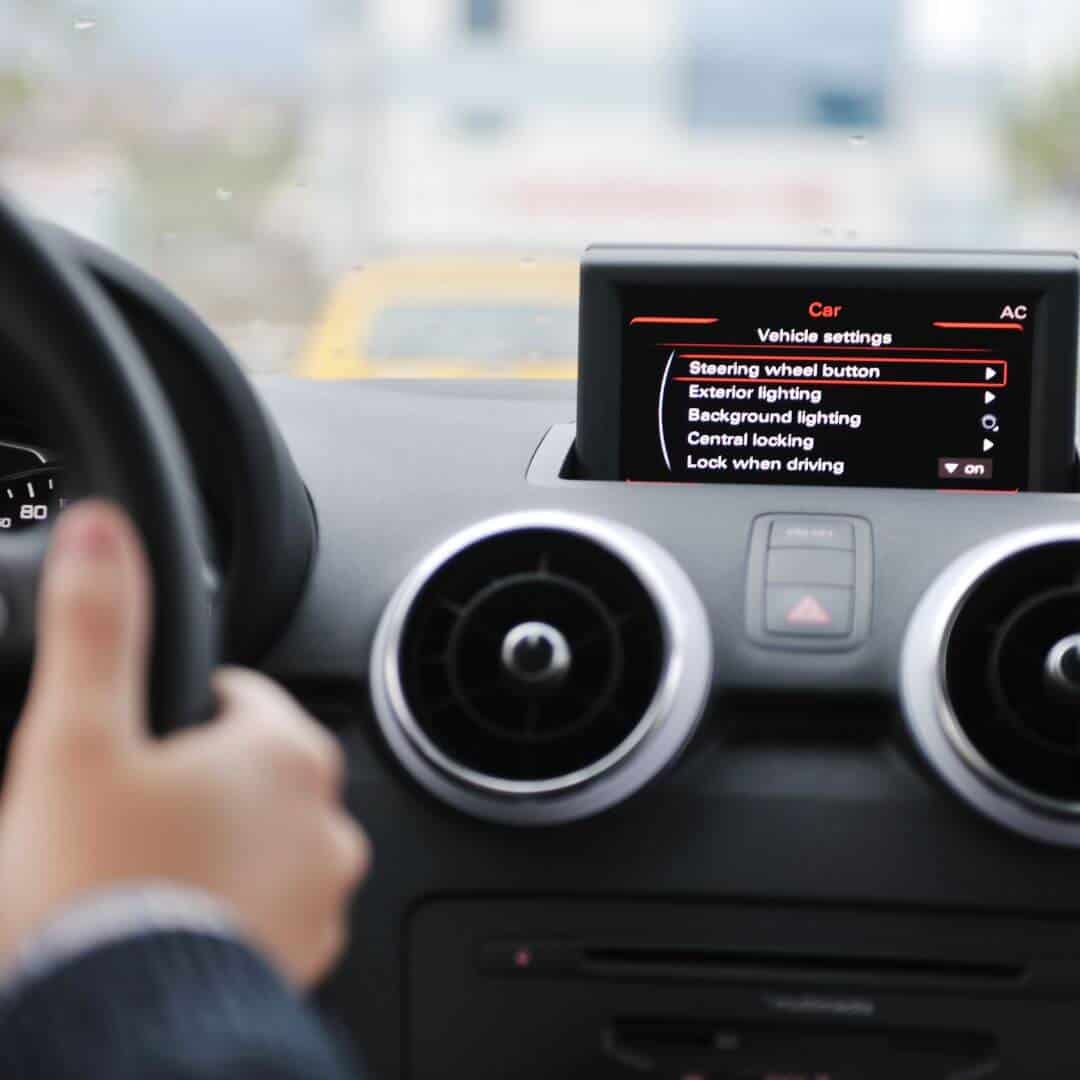
Sometimes, the symptoms don’t appear immediately. It may take days for some car issues to exhibit symptoms. Overfilling your car with oil is one of them. Can the car be driven regularly for days before it showcases the symptoms? How long exactly? Well, let’s find out.
Driving an overfilled vehicle
We’ve seen what can happen to a car when overfilled, but the question is, how long can these side effects take to show up?
The danger of running the overfilled car lies in the fact that the engine could get damaged from improper use. Even relatively new cars could quickly get damaged in the process due to overheating and engine damage.
An overfilled car can be driven for days or even a week before the side effects become obvious. Even the smaller effects we mentioned before may take a while to occur, but the bigger ones are bound to take a bit.
The problems will often be tied to oil spilling into parts that shouldn’t contain any. Although the most common damages occur to the serpentine belt and catalytic converter, those alone can lead to extra problems.
Your combustion may get messed up. The oil will affect the amount of friction present, reducing the efficiency of the process. If oil ends up leaking due to an unrelated issue, this and any of the aforementioned problems can get even worse.
Overfilled engine oil by 1 litre/ 33,8 oz
While it’s likely to notice the problems earlier with a smaller amount of extra oil, it may also take a while for them to crop up if we insert 1 litre of oil. The side-effects will be far more considerable though, as oil spills over the rest of our engine.
Oil finding its way to the places where it shouldn’t be is a surefire way to experience serious malfunctions. This is why overfilling engine oil by 1 litre isn’t recommended.
How to read an oil dipstick?
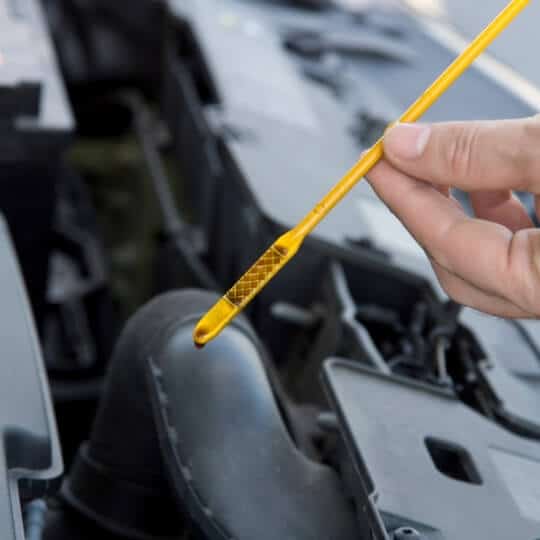
The best way to avoid overfilling your engine with oil is by knowing how to properly read a dipstick. Reading the dipstick properly leaves us with enough oil to operate the vehicle without any overfilling side effects.
The use of dipstick
Make sure the car is fully turned off. Give it a few minutes to cool off, and then raise the hood of your car. Next, locate the engine dipstick, which will often be yellow. If the location of the dipstick isn’t apparent, consult the engine’s manual.
While holding a towel under the dipstick, pull it out. Dripping oil may dirty the engine or result in uncomfortable smells later.
Wipe the dipstick carefully. The dipstick may still be hot if the car has been recently turned off. After the dipstick has been cleaned, we can access the final step.
Insert the dipstick fully into the tube and then pull it out. There are two marks on the dipstick, one showing that the oil level is low while the second points it as full.
It’s optimal to keep the oil level between the two to avoid overfilling while providing ample oil for the engine. Some engines may have different indicators, in which case you should consult the manual again. [4]
Reading the results past the marks
While marks are a direct indicator of the oil level, there’s another aspect to keep in mind. This would be the color of the oil itself. If the oil looks clean, it’s light in color, seeming almost transparent, and your oil is good. In case the marks showcase the oil level being fine, you won’t need any extra actions.
However, if the oil is of darker color or even fully black, it’s time for an oil change. While lack of oil can be resolved by pouring more of it in, having an alright oil level with dirty oil requires a visit to the mechanic to switch it out.
How much oil is too much on the dipstick
We’ve covered how to read the marks and how to read the oil. However, what does it mean to have too much oil, and how much is too much? These readings are all above the dipstick’s present marks.
The car will be fine if you pour a few millimeters over the mark. It’s possible to pour 100 to 200 g of oil into the oil filler without suffering any significant repercussions.
Anything higher than that is cause for concern. When readings showcase 1 litre (33,8oz) of overfill or more on a dipstick, it’s best to drain the extra oil. Otherwise, the problems we’ve gone over earlier may occur, and heavy damage to the engine could soon follow.
Lastly, it’s important to switch out oil immediately if it shows up foamy on the dipstick. There are multiple reasons oil may turn this way, whether overfilling the sump or contamination, but all will lead to car troubles we’d rather avoid.
What if you don’t have a dipstick?
Some car models such as Audi Q5 from 2012 does not have dipstick. Oil level could be seen on car’s dashboard after working temperature is achieved. You should be careful because these cars can “burn” up to 0,5 liter (17 oz) per 1000 km/620miles.
Don’t forget to change oil filters while changing engine oil. Those car parts could be expensive but they must be changed in proper service interval.
How to pour oil correctly?
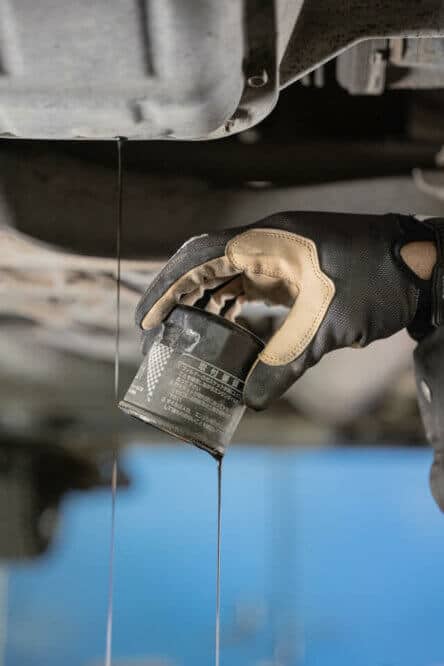
Switching out oil yourself is a process you should be very careful with. Due to the overall role oil has within the car, the process has to be run correctly or our car could experience some side effects.
Raise the car
The first step is to give the car a high enough elevation so the important components below it can be reached. While floor jacks are a usual approach people take for car works it’s very dangerous to do it in this situation due to the fact you’ll be below the car. If the jack gives out for any reason you could be crushed.
While one jack is a dangerous proposition, using a portable car lift is the only secure option.
Now we have to remove the cover, also referred to as an undertray. This component will require a mix of tools. Undertrays can have bolts, screws, and plastic clips securing them so be prepared to deal with all of those.
Let the old oil drain
For this step, get a bucket or an oil drain pan. You’ll need to store oil somewhere after draining it. Remove the car’s drain plug. This will require an appropriate wrench and a bit of effort.
Be careful! As soon as the drain plug is removed the oil will flow. Hold the drain plug while unscrewing it and then position the draining container below it.
This step shouldn’t be hastened, any remaining old oil could contaminate the one we end up pouring in ourselves or cause issues on its lonesome. Let it drain for 5 to 10 minutes before proceeding with the next step.
Change the oil filter
The engine will contain a cylindrical component screwed onto it. This is an oil filter and it has to be changed along with the oil. Unscrew it either with your hands or with an oil-filter wrench depending on how tight it’s stuck. The same word of advice goes for oil filter as it did with drain plug. Drip out the oil that comes out into a container and wait.
Once all of the oil is gone, check if the oil-filter gasket was left behind. This is a simple rubber ring. If this ring hasn’t been left behind, get ready to install the new filter.
Tighten the drain plug and filter
The unscrewed parts now have to be put back in place. Screw them carefully to avoid damaging them. Oil filter should have a light coating of oil around the aforementioned ring of the new oil filter. That will cement that the filter has been properly sealed.
Finish this step by reinstalling the undertray on the vehicle. With that, you are ready for the last step of the oil change.
Pour the oil in and check the level
Now’s the time to pour the oil. Make sure to not pour too much in. Pour it into another container with specific measurements if you can’t gauge how much to pour.
Regardless of the approach you choose, next step is to wait for oil to settle. It should take a few minutes after which we should use the dipstick to confirm the level is right.
Another detail you should note during this step is whether there are any leaks on the car. Whether when pouring or checking the level, it’s possible to spot odd locations from which leaks may happen. In case these leaks do occur, make sure to handle them as soon as possible.
Oil consumption in cars
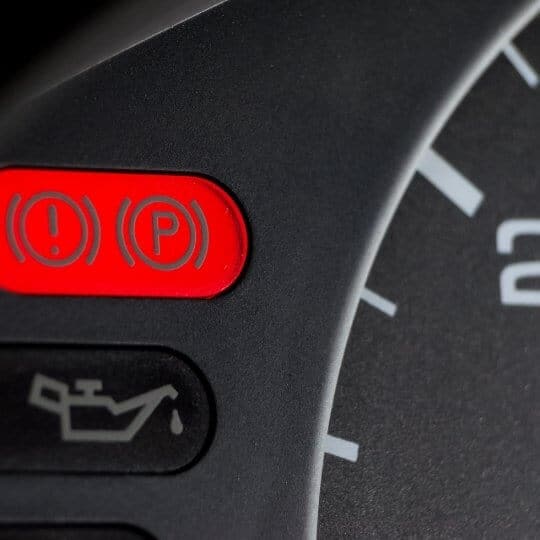
Not every car spends the same amount of oil. Some may require a bit more, some less but they all use it nonetheless. Oil is an integral part of a car’s function so it’s good to know about its use.
Oil consumption
Most commonly, the difference in fuel consumption is a generational one. Newer cars can travel far longer before expanding their oil supply while older ones are usually going to need a check after a few farther trips.
This is why it’s suggested to check oil levels every 2000 to 3000 km or 1250-1900 miles for newer cars, and every 500 to 1000 km or 310-620 miles or for older cars. While they won’t use all of their oil after these distances, their oil level may fall below the optimal point. This point being between minimum and maximum oil capacity of a car.
While cars can be driven even if they are low on oil, this action can be very harmful to the overall machine. We recommend keeping the oil level optimal and following the oil check guidelines. Lastly, it’s firmly suggested to check the oil level after every longer trip.
Does oil brand impact spending?

The brand of the oil we pour into our car can affect its consumption. However, it’s best to buy oils of proven brands. Buying cheap or low-quality oils can prove to be less effective no matter their brand.
Related: How Long You Can Run A Car With Too Much Oil
Conclusion
We can discern a few important details with all that said and done. Most of them are tied to the potential side effects and warnings of overfilling the engine.
The first slew of things we should watch out for is the readings of our dipstick. The dipstick can be a great and immediate way to gather information on your oil’s current situation. Whether a change is required or too much oil has been put in is something we’ll know by just checking the dipstick out.
The symptoms of the overfilling will come in during the first week of us pouring too much oil into the car. Look out for them and make sure to react as soon as some are spotted. Early action can mitigate a lot of damage. Even if you poured only a bit of extra oil and noticed these effects, it’s useful to take a peek. It’s better to be safe than sorry.
Lastly, overfilling the tank by 1 litre has been shown to cause many problems. It’s dangerous as putting the wrong fuel into your car.
Hopefully, these precautions and information will allow you to stay safe and keep your car healthy before it gets out of hand.

